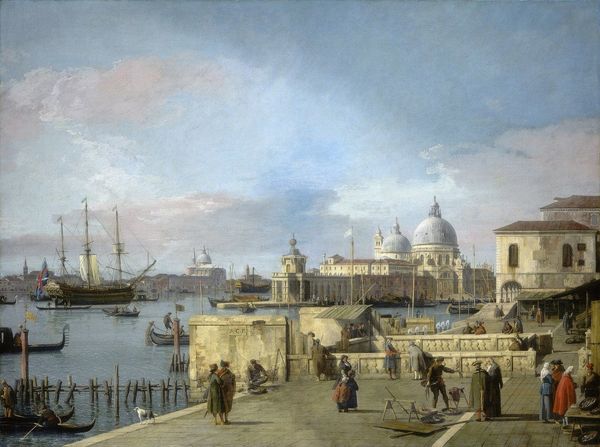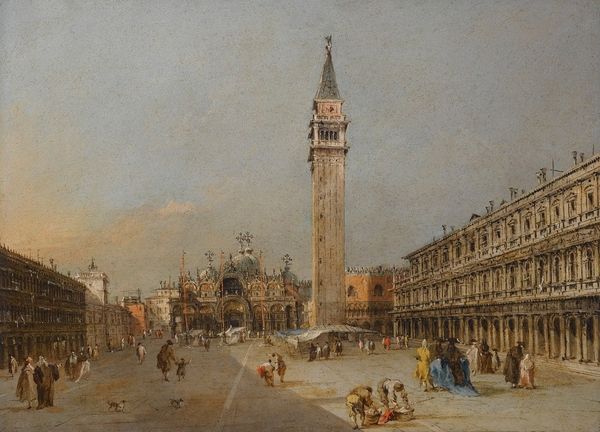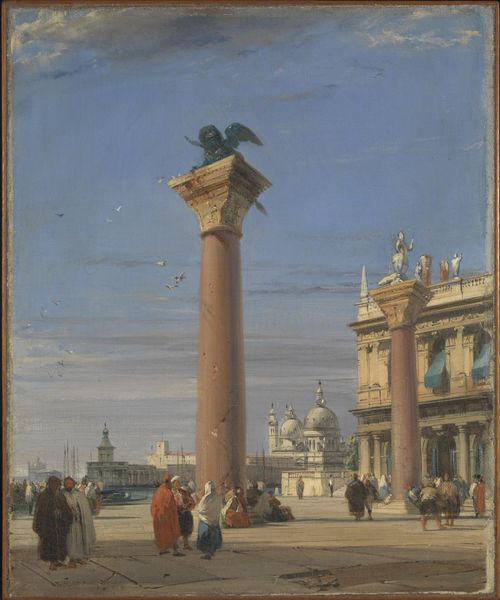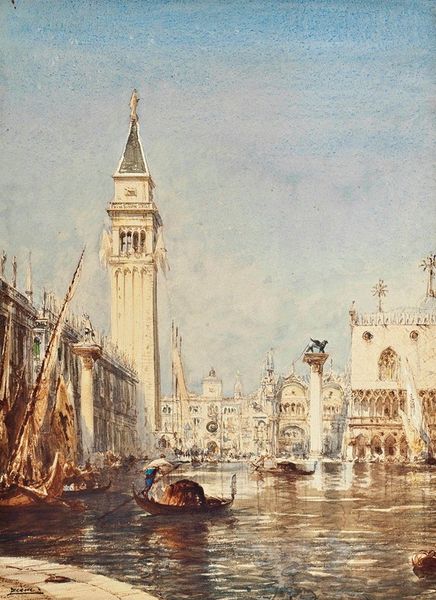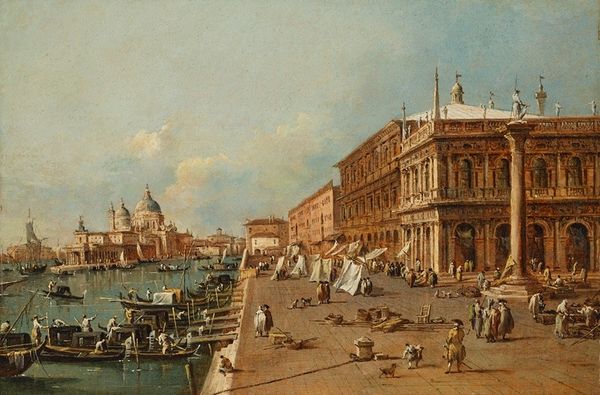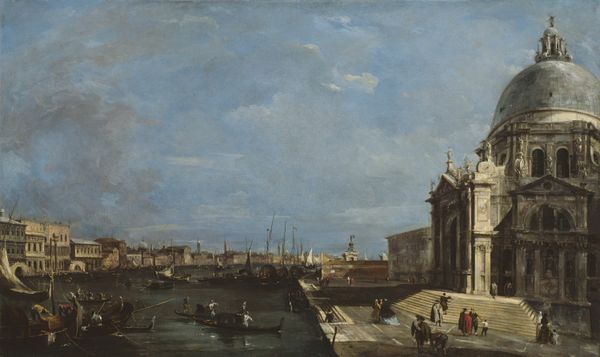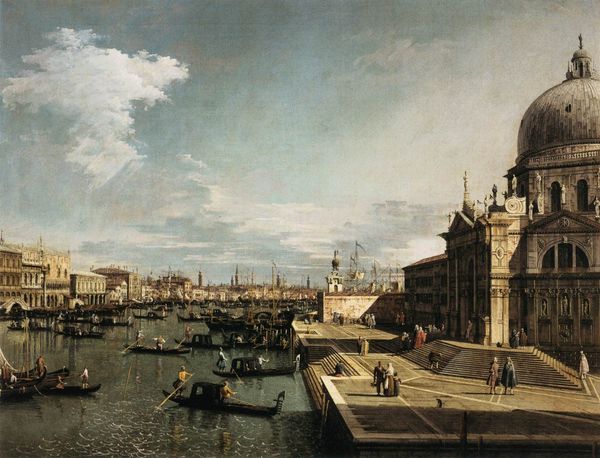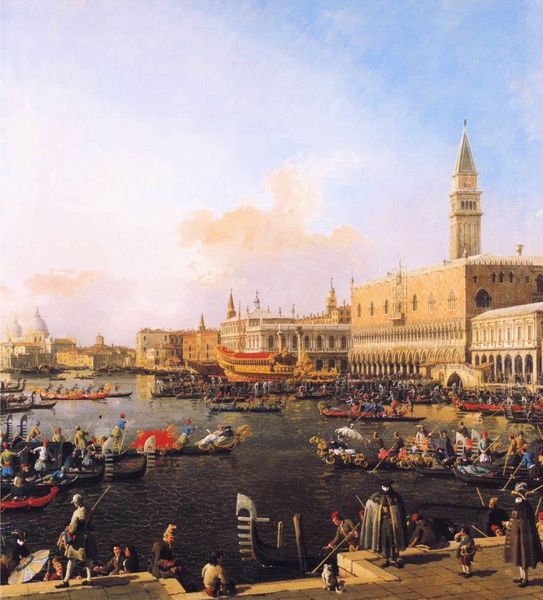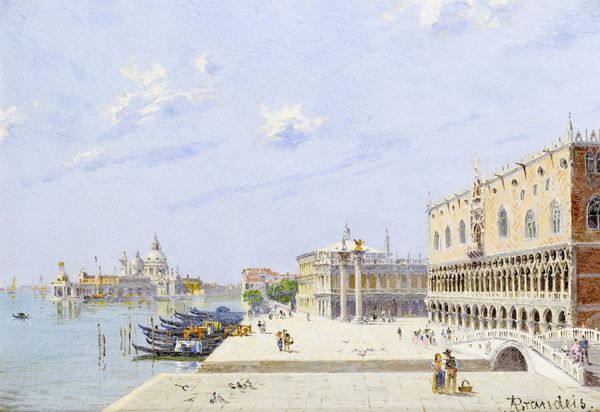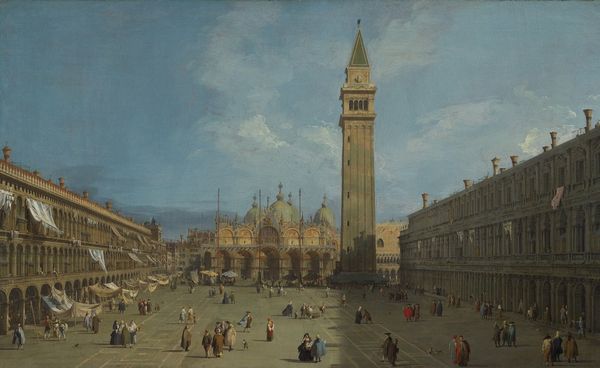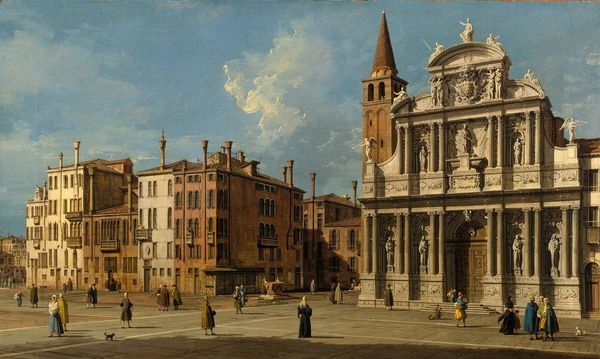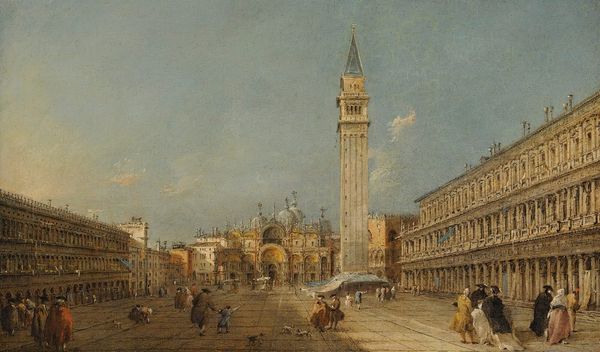
painting, oil-paint
#
urban landscape
#
venetian-painting
#
baroque
#
painting
#
oil-paint
#
landscape
#
urban cityscape
#
perspective
#
cityscape
#
rococo
Copyright: Public Domain: Artvee
Curator: Canaletto, known for his Venetian cityscapes, likely created this vista, "Bacino di S. Marco from the Piazzetta", using oil paints. What is your first impression? Editor: An air of quiet dignity, almost serene, despite the bustle I imagine existed in reality. The soft, pale colors add to that feeling. Curator: Indeed. It is a masterclass in perspective and light. Notice how Canaletto painstakingly renders the architecture – the Doge's Palace, the columns of San Marco – emphasizing Venice as a hub of power and commerce. Editor: And what about the winged lion atop one of the columns? That symbol alone evokes centuries of Venetian history, a legacy of maritime strength and artistic achievement. And there's also the other figure on the left-hand side. They both stand proudly guarding this floating city. Curator: Certainly. But let’s consider the material reality of Venice itself. This image is a carefully constructed commodity, made for wealthy tourists seeking a souvenir of their travels. Canaletto, operating almost like a workshop, efficiently produced these views, exporting images of Venetian identity for external consumption. Editor: Yet these aren’t simply postcards. They are meticulously crafted depictions loaded with symbolism. Take the sea itself—the ever-present water not only signifies Venice's unique position as a trading port, but also carries connotations of fluidity, adaptability and perhaps even vulnerability. Curator: Vulnerability yes, that’s key. The foundation of Venetian wealth – its control of trade routes – was fragile. By the time Canaletto was painting, Venice was losing its dominance. The image both celebrates the city's grandeur and, perhaps unwittingly, documents its decline. Note also the very organization of labor along the portside: this piece highlights an increasingly unequal access to production and resources. Editor: The contrast between the imposing architecture and the ordinary people going about their daily business strikes me. Canaletto’s perspective reminds the patrons who buy this work of the powerful, established hierarchies that dominate Venetian life. Curator: Precisely. Each element carefully considered in the light of class, labour, and production value, carefully exported for maximum monetary advantage. Editor: Thinking about all of these symbolic layers and contextual references makes appreciating "Bacino di S. Marco" an immersive experience. It's so much richer than a simple snapshot. Curator: Yes, a manufactured and symbolic export item representative of a precise period.
Comments
No comments
Be the first to comment and join the conversation on the ultimate creative platform.
